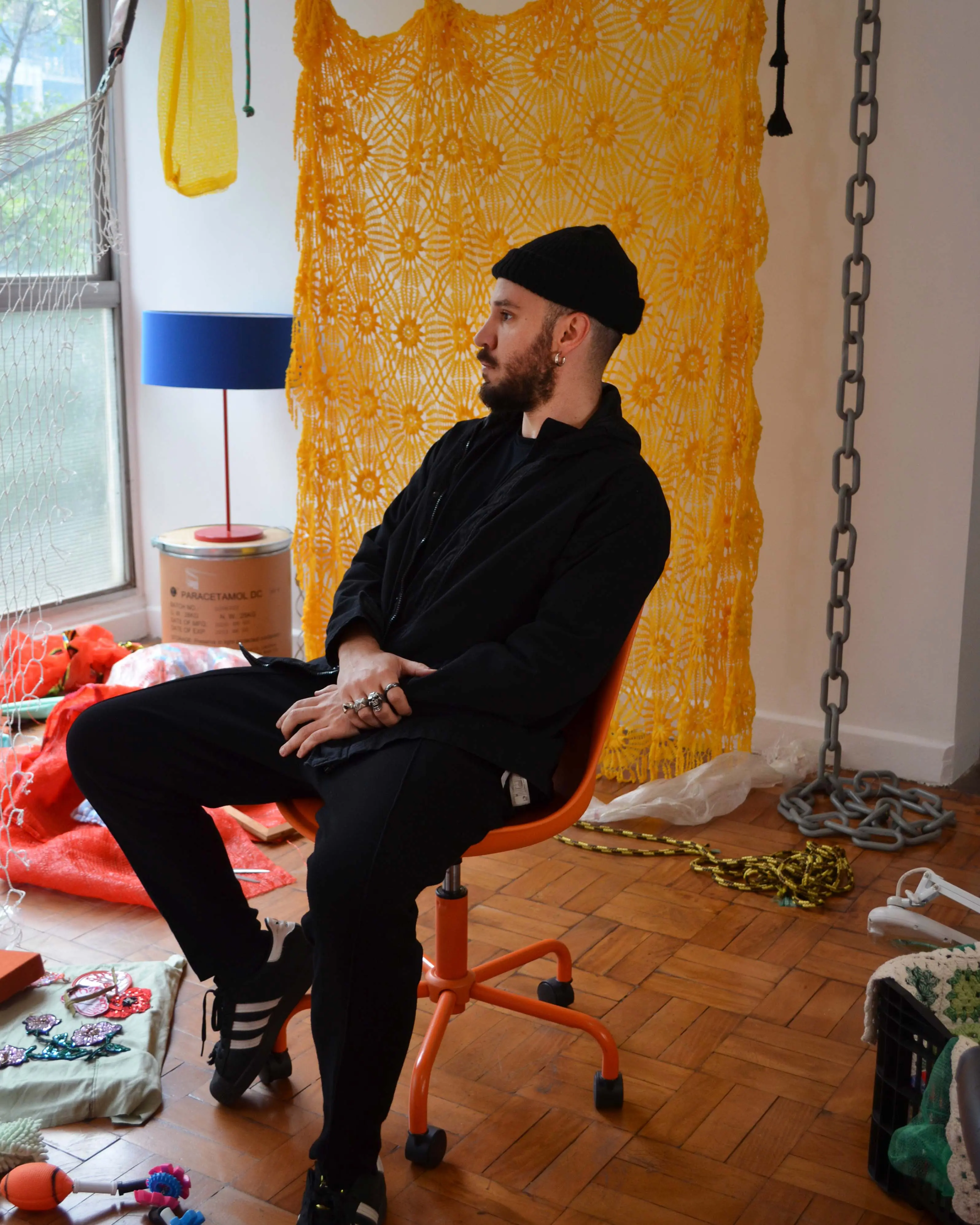Lamonier works across various media, including textiles, drawings, photographs, videos, and installations. Moving between politics, social issues, and sexuality, his practice critically connects memory, fiction, and the hyperstimuli of pop culture and media, creating autobiographical and utopian narratives that span urban centers, the outskirts, and minority groups.
The installation, commissioned by the 14th Mercosul Biennial, presents different working processes of the artist. In a space conceived as an “editing island,” visual materials and sound stimuli intertwine with a poetic essay, with manuscripts scattered across the gallery walls. In these notes, the artist reflects on his intimate life and connects it to historical events, from the Big Bang theory to the present day.
Also part of the installation is a shapeless structure composed of accumulated objects, video monitors, masks, photographs, and other elements that reference vernacular culture and Western history over the past century. The work can be interpreted as a metaphor for a repressed collective unconscious, reflecting a tragic past, a neurotic present, and a future unfolding blindly in the face of a fractured civilizational pact and an imminent global collapse.
Carolina Grippa
Randolpho Lamonier (Brazil, 1988) is a visual artist who graduated from the School of Fine Arts at UFMG. His work moves between media, emphasizing textile art, painting, video, and installation. In his research, words and images are always in dialogue and often deal with micro and macro politics, chronicles, diaries, and multiple intersections between memory and fiction. He has participated in several exhibitions at institutions such as the Denver Art Museum, MASP, and Another Space in New York. His work is part of the permanent collections of MASP, the Denver Art Museum, and the Pinacoteca do Estado de São Paulo, among others. He lives in São Paulo, Brazil.
